
The WattRod™ provides a safe, easy, and effective heat-sink for use in your vacuum chamber. We recommend it for use with our Thermoelectric Quartz Crystal Microbalance (TQCM) line of QCMs (sold separately). The TQCM line of crystal microbalances have the unique ability to both heat and cool the crystals within a limited range of temperatures. They require a heat-sink that will remain close to the ambient temperature outside the chamber. The crystal temperature in the TQCMs can be controlled by the internal Peltier heat exchangers to bring the crystals to the temperature at which a specific gas will condense, and can be measured.
Features
- Effective and proven heat-pipe provides superior cooling
- Convenient passive design, no wires, pumps, or refrigerant required
- Sealed unit to avoid chamber contamination
- Low maintenance and long life
- Operating range from -50C to +180C, or -58F to +356F
- Available in both the Kwik-Flange™ or Del-Seal vacuum flanges.
- Standard length is 15”x .625” with an insertion length into the chamber of 9.75”
- Order lengths from 12” to 18” providing 6.75” to 12.75” extension inside the vacuum chamber
- Designed for Ultra-High Vacuum environments, anywhere contamination control is highly critical.
- Operates in any orientation, though operation is most efficient with heat-source lower than condenser.
- Thousands of times the thermal conductivity of solid copper!
- Actually provides higher cooling power as the operating temperature (or input power) increases, protecting sensitive devices from overheating.
- Highly versatile attachment to heat-source, suitable for our TQCMs or other high-power vacuum devices.
Information
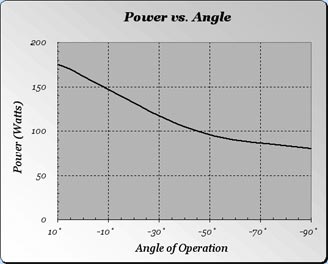
Angle: This chart illustrates that the WattRod™ can be operated even against gravity (negative angles) due to the unique design of the wick structure. Operation is most efficient near the horizontal, however, and we recommend horizontal installation.
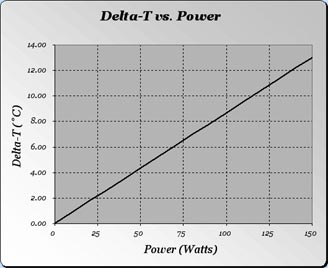
Delta-T: The WattRod™ has enormous heat- transporting potential, moving large quantities of energy through a small aperture. With proper attachment, a 150-Watt load will operate at only 13º C above the condenser temperature.

Temperature: The temperature of the evaporator- end defines the operating temperature of the WattRod™. The WattRod™ actually operates mos effectively at 150º C, as shown. This is due to equilibrium conditions of the ‘steam-pressure’ within the evacuated tube.
Data shown for 5/8″ diameter 12″ long heatpipe
TQCM Mounting Bracket
The TQCM mounting-bracket allows for highly flexible positioning and orientation of the TQCM. The highly- polished 6061 T6 Aluminum mounting-bracket tightens onto the heatpipe with silver-plated (non-galling) screws. The clamp pieces compress a reusable high- purity, soft-copper pad for high thermal contact. Five mounting options are shown. MK10 TQCM shown as an example and is sold separately.
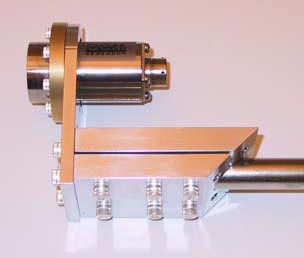
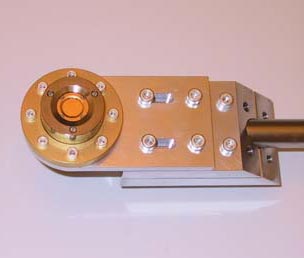
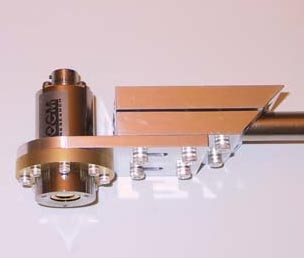
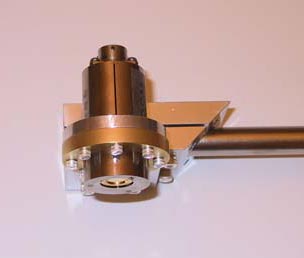
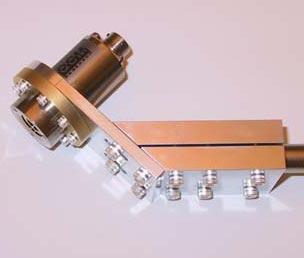
Construction
A heat-pipe consists of three principal elements: 1) a sealed tube (typically copper), 2) a heat-transfer medium (such as water, ammonia, or methanol) enclosed under partial vacuum within the tube, and 3) an internal ‘wick’ structure. Capillary action within the wick transports the liquid medium to the evaporator end of the tube, whereupon the liquid is vaporized by the addition of heat, and is transported by vapor pressure to the condenser end, thus closing the loop.
History
Heat-pipes have been used commercially for decades as a means of ‘passively’ removing excess heat from critical, confined areas and transporting it to a remote condenser. Heat-pipes are used in spacecraft, for instance, to remove power from internal electronic components, and transport that power to radiators on the outside of the spacecraft. They are also used in portable computers where large amounts of heat must be transported through small apertures and openings. Heat-pipes have recently become very affordable, due to major advances in automated manufacturing techniques, and are available in a variety of lengths and diameters.
Capabilities
Due to the enormous latent heat of vaporization of some fluids, the capabilities of heat-pipes can be enormous, easily 10,000 times that of solid copper rods. In addition, the “delta-T” or difference in temperature between a 100-Watt source and the condenser can be as low as a few degrees while for a similar length and diameter of copper rod, the delta-T would be over 250 degrees! This condition is typically only met when heat exchange is limited primarily to conduction, as it is in the Ultra High Vacuum (UHV) region. (Radiation and convection are the other means of thermodynamic exchange.)
The WattRod vacuum feed-through heat-pipe assembly has no moving parts and therefore has extremely long life. It provides a passive means of removing large amounts of power (hundreds of Watts), inexpensively, simply, and effectively, without compromising the cleanliness of the vacuum chamber. The WattRod is constructed entirely out of Ultra-high Vacuum (UHV) compatible materials and coatings to permit optimal operation within the UHV environment. Nickel-plated copper and highly-polished aluminum clamp pieces help to minimize radiative coupling to the vacuum chamber walls. The WattRod can therefore be operated at room temperature, even when the surroundings are at very elevated temperatures.
Which vacuum feedthroughs are available?
The WattRod is available with either CF style or KF vacuum flanges. Standard flanges are NW-25 and 2-3/4″ Del-Seal, but special flanges are available upon request.
What sizes are available?
Standard WattRod heat-pipes are available in lengths from 12″ to 18″, providing from 7″ to 13″ extension inside vacuum.
Can they really operate at ANY angle?
Due to the special design of the WattRod heat-pipe, it can be operated in virtually any orientation. While it is possible to operate the WattRod with the heat-source above the condenser-end, efficiency is severely limited, and only short runs (~6″) are possible. We therefore recommend that the WattRod be operated either horizontally, or with the evaporator-end below the condensor-end.
Precautions
The WattRod can withstand a wide range of operating temperatures, ranging from -50º C to +180º C. Under no circumstances should the WattRod ever exceed 180º C, or the vapor pressure inside the tube will cause the tube to burst (a seal will open near the condensor-end of the tube.)

 Vacuum Outgassing Deposition Kinetics Apparatus
Vacuum Outgassing Deposition Kinetics Apparatus
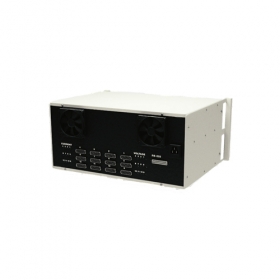 Model 2000
Model 2000